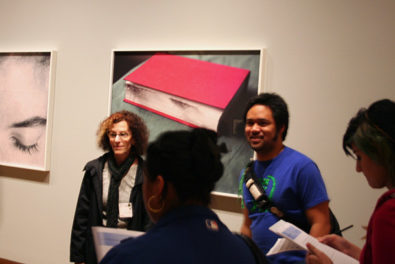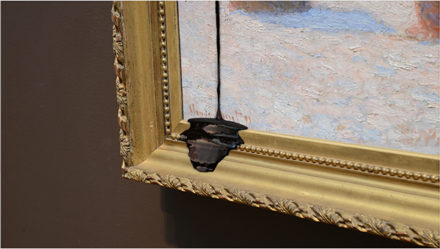
Le Cardinal d’Amboise, Joseph Nicéphore Niépce, (1765–1833), about 1826. Heliograph on pewter. The Royal Photographic Society Collection at National Media Museum
I’m always amazed when science can provide a new glimpse into the life and works of an artist who lived long before my time. It makes me feel closer to the artist’s intention to be able to understand how he or she went about the process of creating.
Most people know Louis Daguerre and Henry Talbot as the fathers of modern photography. But that’s not the whole story. In the beginning of the 19th century, Frenchman Joseph Nicephore Niépce—subject of an international conference starting tomorrow in England—produced various image-making techniques now known to be precursors to modern photography: his unique heliographs (photograph using the sun and a device called a camera obscura) were first created on, of all things, pewter plates.
In 1827, Niépce brought these images to England to demonstrate his techniques to the Royal Society in hopes he would be admitted and his talent recognized. Unfortunately, during his time in England The Royal Society was in turmoil and Niépce was unable to share his experiments. Ambitions crushed, he died in 1833, leaving his sometime collaborator Daguerre to publicly reveal photography to the world in 1839.
Recent analysis by Getty Conservation Institute scientists Dusan Stulik and Art Kaplan on a handful of Niépce’s early photographs is now shedding light on the photographer’s secretive process. New results show that Niépce experimented with a variety of inventive techniques in early image making that led the way in the birth of modern photography.
Of the four known surviving plates Niépce took to England, one is now on display at the Harry Ransom Center at the University of Texas at Austin—considered the First Photograph. (GCI scientists analyzed this image in 2002.) Three of the remaining photographic plates Niépce brought to England now reside at the National Media Museum in the U.K.
It’s these latter plates that were examined by GCI scientists. The research shows that these three images undoubtedly represent the finest examples of Niépce’s photographic work, and, disproving previous theories, actually represent not one, but a range of different experiments.
Interestingly, the results also prove that one of the plates, a photographic copy of a design by Louis Daguerre, “Un Clair de Lune,” which has long been thought to have been enhanced with etching, was not enhanced at all, but was simply a wonderfully rendered heliogram.

Un Clair de Lune, Joseph Nicéphore Niépce (1765–1833), about 1827. Photograph on pewter. The Royal Photographic Society Collection at National Media Museum
Another surprise found in this particular plate lies a little deeper than the image itself. Analysis shows that Niépce’s process began with a pewter plate as a base like all his other works, but this successful picture also began with a fragrant coating of what appears to be solidified lavender oil, which prepared the base to accept the image.
Stulik likes to say that everything related to photography that surrounds us today—digital cameras, film, TV, even 3D and videogames—go back to Niépce’s very first inventions. (For an interview with Stulik, see this video from the National Media Museum.)
He has recreated Niepce’s experiments in his lab, with—I have to say it—some very sweet-smelling success. The team’s technical findings do shine a different light on the early history of photography than has been previously described in literature. It’s a shame that Niépce wasn’t better recognized for his works during his lifetime. His contributions to photography were creative, interesting, and in the long run, immeasurable.

Christ Carrying his Cross, Joseph Nicéphore Niépce (1765–1833), about 1827. Heliograph on pewter. The Royal Photographic Society Collection at National Media Museum




Comments on this post are now closed.
Trackbacks/Pingbacks